
Discover the Enchanting Charms of Anderlecht
Explore Anderlecht: A captivating blend of history, culture, and modern charm in the heart of Brussels.
Anderlecht is a vibrant and historic neighbourhood located in the southwest of Brussels, Belgium. It offers a fascinating blend of old-world charm and modern amenities, making it a must-visit destination for tourists. Anderlecht is known for its picturesque streets, beautiful parks, and rich cultural heritage. One of the highlights of Anderlecht is the stunning Erasmus House, a museum dedicated to the renowned humanist Desiderius Erasmus. The museum is located in a 16th-century house and showcases a collection of rare books, artwork, and personal items belonging to Erasmus. The surrounding garden is a peaceful oasis, perfect for a leisurely stroll. Another notable attraction in Anderlecht is the Collegiate Church of Saint Peter and Saint Guido. This impressive Gothic church dates back to the 14th century and features beautiful stained glass windows, intricate wood carvings, and a grand organ. The church is a testament to Anderlecht's rich religious history. For those interested in local culture, the Anderlecht Market is a must-visit. Held every Sunday, this bustling market offers a wide range of fresh produce, artisanal products, and delicious street food. It's a great place to experience the local vibe and pick up some unique souvenirs. Anderlecht is also home to the Constant Vanden Stock Stadium, the home ground of the R.S.C. Anderlecht football club. Sports enthusiasts can catch a match and experience the electric atmosphere of Belgian football. Whether you're interested in history, culture, or simply enjoying the local atmosphere, Anderlecht has something for everyone. Its unique blend of attractions and friendly locals make it a delightful neighbourhood to explore.
Local tips in Anderlecht
- Visit Erasmus House early in the day to avoid crowds and enjoy the serene garden.
- Wear comfortable shoes as the best way to explore Anderlecht is on foot.
- Check the schedule for R.S.C. Anderlecht matches in advance if you wish to attend a game.
- Bring cash to the Anderlecht Market as some vendors may not accept cards.
- Try the local street food at the market for an authentic taste of Belgian cuisine.
Discover the Enchanting Charms of Anderlecht
Anderlecht is a vibrant and historic neighbourhood located in the southwest of Brussels, Belgium. It offers a fascinating blend of old-world charm and modern amenities, making it a must-visit destination for tourists. Anderlecht is known for its picturesque streets, beautiful parks, and rich cultural heritage. One of the highlights of Anderlecht is the stunning Erasmus House, a museum dedicated to the renowned humanist Desiderius Erasmus. The museum is located in a 16th-century house and showcases a collection of rare books, artwork, and personal items belonging to Erasmus. The surrounding garden is a peaceful oasis, perfect for a leisurely stroll. Another notable attraction in Anderlecht is the Collegiate Church of Saint Peter and Saint Guido. This impressive Gothic church dates back to the 14th century and features beautiful stained glass windows, intricate wood carvings, and a grand organ. The church is a testament to Anderlecht's rich religious history. For those interested in local culture, the Anderlecht Market is a must-visit. Held every Sunday, this bustling market offers a wide range of fresh produce, artisanal products, and delicious street food. It's a great place to experience the local vibe and pick up some unique souvenirs. Anderlecht is also home to the Constant Vanden Stock Stadium, the home ground of the R.S.C. Anderlecht football club. Sports enthusiasts can catch a match and experience the electric atmosphere of Belgian football. Whether you're interested in history, culture, or simply enjoying the local atmosphere, Anderlecht has something for everyone. Its unique blend of attractions and friendly locals make it a delightful neighbourhood to explore.
Iconic landmarks you can’t miss
Parc Astrid
Discover the serene beauty of Parc Astrid in Anderlecht, a perfect retreat for nature lovers and families seeking a peaceful escape.

Erasmus House
Explore Erasmus House in Brussels, a captivating museum dedicated to the life and works of the Renaissance philosopher Desiderius Erasmus.

place de la Résistance
Discover the spirit of resilience at Place de la Résistance, a serene tribute in Anderlecht that reflects the community's rich history and culture.

Jean Claude Van Damme Statue
Discover the iconic Jean Claude Van Damme Statue in Anderlecht, a must-visit for movie fans and lovers of Belgian culture.

Busselenbergpark
Discover the serene beauty of Busselenbergpark, a lush green oasis in Anderlecht perfect for relaxation, picnics, and leisurely strolls.

Béguinage of Anderlecht
Explore the serene Beguinage of Anderlecht, a historical gem showcasing the unique lifestyle of the beguines amidst tranquil gardens.

Maurice Carême Museum
Discover the sweet legacy of Maurice Carême at this charming museum, where literature meets the art of Belgian chocolate.

Monument der gesneuvelden
Explore the Monument der Gesneuvelden in Anderlecht, a striking tribute to valor and sacrifice, set in a serene park perfect for reflection.

Sint-Guidoplein
Explore the serene Sint-Guidoplein in Anderlecht, Belgium, a hidden gem showcasing local culture, delightful cafes, and beautiful architecture.

Cité béthel bruxelles
Explore the serene beauty of Cité Béthel, a hidden gem in Brussels, where tranquility meets architectural elegance.

Unmissable attractions to see
Parc Astrid
Explore the beauty of Parc Astrid in Anderlecht, a stunning park blending nature, tranquility, and local culture, perfect for all visitors.

Sewer Museum
Explore Brussels' hidden history at the Sewer Museum, a unique attraction showcasing the evolution of urban sanitation and engineering marvels.

Busselenbergpark
Discover the tranquil beauty of Busselenbergpark, a charming urban oasis in Anderlecht, perfect for relaxation and recreation.
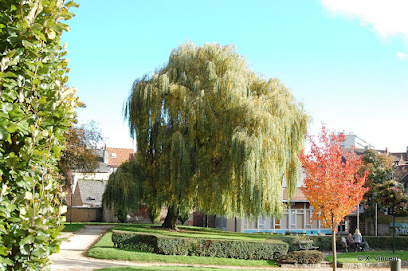
Béguinage of Anderlecht
Explore the serene Béguinage of Anderlecht, a historical site showcasing the unique heritage of Belgium's beguine women in a tranquil setting.

Maurice Carême Museum
Explore culinary art and poetry at the Maurice Carême Museum in Anderlecht, a unique tribute to Belgium's beloved poet and confectioner.
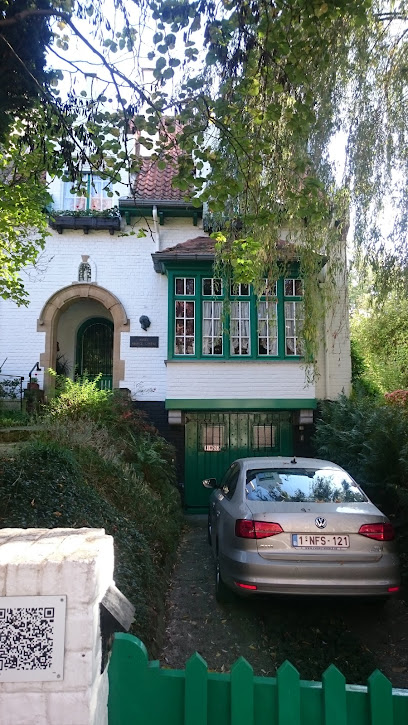
Essential places to dine
Bohemian
Experience the vibrant flavors of Belgium at Bohemian in Anderlecht – where culinary creativity meets warm hospitality.

BARBQ Café
Discover the vibrant flavors of BARBQ Café in Anderlecht - where delicious grilled dishes meet a warm, inviting atmosphere for all food lovers.

I Panciuti
Discover authentic Italian flavors at I Panciuti in Anderlecht – where every dish tells a story of tradition and passion.

La Brouette
Experience the art of fine dining at La Brouette in Anderlecht - where exquisite French cuisine meets an inviting atmosphere.

Restaurant L'Altruiste BXL
Experience authentic Belgian cuisine at Restaurant L'Altruiste BXL in Anderlecht - a true taste of local flavors amidst cozy surroundings.

La Paix
Experience exquisite haute French cuisine at La Paix in Anderlecht—where tradition meets modern culinary artistry.

La Kantine du Canal
Discover La Kantine du Canal: A delightful lunch spot by the water with eclectic decor and delicious Belgian cuisine.

Brasserie Saint Nicolas
Experience authentic Belgian cuisine in the heart of Anderlecht at Brasserie Saint Nicolas.

Chez Carlos Green Park
Experience authentic flavors at Chez Carlos Green Park in Anderlecht – where every meal is a celebration of culinary excellence.
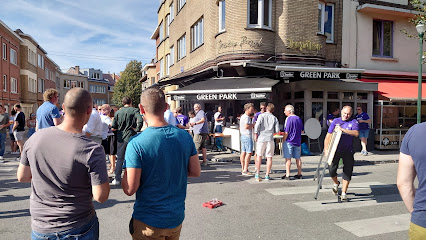
Le Béguinage
Discover authentic Belgian cuisine at Le Béguinage in Anderlecht, where tradition meets modern culinary art.

Markets, malls and hidden boutiques
Westland Shopping
Explore Westland Shopping in Brussels for an unbeatable variety of retail, dining, and entertainment options all in one place.
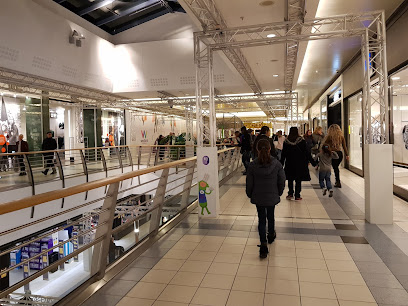
Action store
Explore the Action store in Anderlecht for an eclectic mix of gifts, home essentials, and DIY supplies, all at unbeatable prices.

Fanshop RSC Anderlecht
Explore the heart of Belgian football at Fanshop RSC Anderlecht, your ultimate destination for unique sports memorabilia and club merchandise.

1€ Shop
Explore the 1€ Shop in Anderlecht for unbeatable bargains and unique finds that make great souvenirs and essentials alike.

HEMA Brussel Westland
Explore HEMA Brussel Westland, a unique gift shop in Anderlecht offering a diverse range of products from homeware to baby essentials.

The corner shop
Discover the literary charm of The Corner Shop in Anderlecht, a cozy bookstore offering a variety of books for every taste.

Iqra boutique
Discover the elegance of cultural fashion at Iqra Boutique, a unique clothing store in the heart of Brussels offering exquisite garments and personalized service.

Magasin gratuit
Explore the unique and sustainable shopping experience at Magasin Gratuit in Anderlecht, where all items are free and community thrives.

Night shop Vaillance M And N
Explore the unique late-night shopping experience at Night Shop Vaillance M And N in Anderlecht, where convenience meets local flavor.
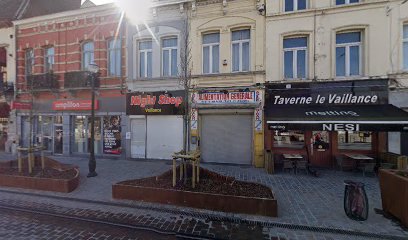
Voorthuistore
Explore Voorthuistore in Anderlecht for unique local products and a taste of Belgian culture.

Essential bars & hidden hideouts
Jack Daniel’s Bar
Discover the vibrant nightlife and exquisite cocktails at Jack Daniel's Bar, the ultimate destination for bar enthusiasts in Anderlecht.

Meia Café-Bar
Discover Meia Café-Bar in Anderlecht: a cozy café-bar offering delightful drinks and a welcoming atmosphere for every visitor.

Bar Le Zazou
Discover the lively spirit of Bar Le Zazou in Anderlecht, where Belgian beers and a vibrant atmosphere await you.

Le Saloon
Discover the lively atmosphere and local flavors at Le Saloon, a must-visit bar in the heart of Anderlecht, perfect for unwinding after a day of exploration.

Le Sprok
Experience the vibrant atmosphere of Le Sprok in Anderlecht, where local drinks and friendly vibes await every visitor.

Café La brique
Discover the charm of Café La Brique, a cozy lounge in Anderlecht offering delightful food and drinks in a warm atmosphere.

Bally's Bruxelles
Experience the perfect blend of relaxation and culinary delight at Bally's Bruxelles, a cozy lounge and restaurant in the heart of Anderlecht.

Le Serment
Discover the authentic Belgian pub experience at Le Serment in Anderlecht, where local brews and a cozy atmosphere await every visitor.
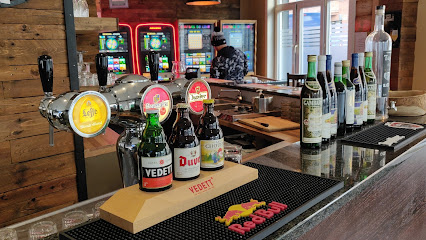
EDN Bar
Experience the charm of EDN Bar in Anderlecht, where delightful drinks and a cozy atmosphere await you.

Nicki's Bar
Discover the pulsating heart of Anderlecht's nightlife at Nicki's Bar, where live music and vibrant atmosphere collide for an unforgettable experience.

Local Phrases
-
- HelloBonjour
[bon-zhoor] - GoodbyeAu revoir
[oh re-vwar] - YesOui
[wee] - NoNon
[non] - Please/You're welcomeS'il vous plaît/De rien
[see voo pleh/duh ree-en] - Thank youMerci
[mehr-see] - Excuse me/SorryExcusez-moi/Désolé
[ex-kew-zay-mwah/deh-soh-lay] - How are you?Comment ça va?
[koh-mohn sah vah] - Fine. And you?Bien. Et vous?
[byen/eh voo] - Do you speak English?Parlez-vous anglais?
[par-lay voo ahn-glay] - I don't understandJe ne comprends pas
[zhuh nuh kohm-prahnd pah]
- HelloBonjour
-
- I'd like to see the menu, pleaseJe voudrais voir la carte, s'il vous plaît
[zhuh voo-dray vwahr lah kart, see voo pleh] - I don't eat meatJe ne mange pas de viande
[zhuh nuh mahnj pah duh vee-and] - Cheers!Santé!
[sahn-tay] - I would like to pay, pleaseJe voudrais payer, s'il vous plaît
[zhuh voo-dray pay-ay, see voo pleh]
- I'd like to see the menu, pleaseJe voudrais voir la carte, s'il vous plaît
-
- Help!Au secours!
[oh suh-koor] - Go away!Allez-vous en!
[ah-lay voo zan] - Call the Police!Appelez la police!
[ap-lay lah police] - Call a doctor!Appelez un médecin!
[ap-lay uh may-dsahn] - I'm lostJe suis perdu
[zhuh swee pair-doo] - I'm illJe suis malade
[zhuh swee mah-lahd]
- Help!Au secours!
-
- I'd like to buy...Je voudrais acheter...
[zhuh voo-dray ah-shet-ay] - I'm just lookingJe regarde juste
[zhuh ruh-gard zhew-stuh] - How much is it?Combien ça coûte?
[kohm-byen sah koot] - That's too expensiveC'est trop cher
[say troh shair] - Can you lower the price?Pouvez-vous baisser le prix?
[poo-vay voo bay-say luh pree]
- I'd like to buy...Je voudrais acheter...
-
- What time is it?Quelle heure est-il?
[kel er ay-teel] - It's one o'clockIl est une heure
[eel ay oon er] - Half past (10)Dix heures et demie
[dees er ay duh-mee] - MorningMatin
[ma-tan] - AfternoonAprès-midi
[ah-pray-mee-dee] - EveningSoir
[swah] - YesterdayHier
[yair] - TodayAujourd'hui
[oh-zhoor-dwee] - TomorrowDemain
[duh-mahn] - 1Un
[uhn] - 2Deux
[duh] - 3Trois
[twa] - 4Quatre
[kat] - 5Cinq
[sank] - 6Six
[sees] - 7Sept
[set] - 8Huit
[wheat] - 9Neuf
[nuff] - 10Dix
[dees]
- What time is it?Quelle heure est-il?
-
- Where's a/the...?Où est un/le...?
[oo ay uh/luh] - What's the address?Quelle est l'adresse?
[kel ay lad-res] - Can you show me (on the map)?Pouvez-vous me montrer (sur la carte)?
[poo-vay voo muh mohn-tray (soor lah kart)] - When's the next (bus)?Quand est le prochain (bus)?
[kahn ay luh proh-shahn (boos)] - A ticket (to ....)Un billet (pour ...)
[uhn bee-yay (poor ...)]
- Where's a/the...?Où est un/le...?
History of Anderlecht
-
Anderlecht's history dates back to the early Middle Ages, with its name derived from the Old Dutch term 'Anderlechte,' which signifies 'among the leeches,' referring to the marshy areas that once dominated the region. The area was initially a small village that began to flourish during the 12th century, thanks to its strategic position along important trade routes connecting Brussels to other regions.
-
In the 12th century, the establishment of the Abbey of Anderlecht became a significant catalyst for the area's development. Founded by the monks of the Order of Saint Augustine, the abbey played a vital role in the spiritual and economic life of the region. The abbey's influence extended to agriculture, trade, and education, marking Anderlecht as an important religious center in the region.
-
The 19th century brought about significant changes in Anderlecht, particularly during the Industrial Revolution. The construction of railways and factories led to rapid urbanization, transforming the village into a bustling working-class neighborhood. This period saw an influx of laborers and immigrants seeking work, contributing to the cultural diversity of the area and leading to the establishment of various social and political movements.
-
Anderlecht was annexed by Brussels in 1921, which marked a new chapter in its history. This integration brought about the modernization of infrastructure and improved public services. The neighborhood began to benefit from the broader economic and cultural opportunities that being part of the capital offered, including the development of parks, schools, and public transport systems.
-
Today, Anderlecht is known for its rich cultural heritage, evident in its historic buildings such as the Church of Saint Peter and the ornate Town Hall. The neighborhood also hosts the famous Brussels Flower Carpet, a testament to the region's floral artistry. Additionally, Anderlecht is home to the RSC Anderlecht football club, which has a strong following and contributes to the local identity. Recent urban renewal projects aim to enhance the neighborhood's livability while preserving its historical charm.
Anderlecht Essentials
-
Anderlecht is easily accessible from various neighborhoods in Brussels. You can reach it via the Brussels Metro by taking Line 5 to the 'Erasme' or 'Beekkant' stations. Alternatively, numerous tram and bus lines, such as tram line 5 and bus lines 46 and 49, connect Anderlecht to central Brussels. The Brussels Central Station provides further access to regional and international trains.
-
Anderlecht is well-served by public transport, including trams, buses, and metro lines. The STIB/MIVB public transport system offers convenient options for getting around the neighborhood. Bicycles can also be rented through the city's bike-sharing program, Villo!, with several stations located throughout Anderlecht. Walking is a great way to explore the area, especially its more quaint streets and local parks.
-
Anderlecht is generally a safe neighborhood, but like any urban area, it has places where caution is advised. Some streets, particularly around the Brussels West railway station, have reported higher crime rates. Avoid displaying valuables and remain vigilant in crowded areas. It’s wise to stay within well-lit areas at night and be aware of your surroundings.
-
In case of an emergency, dial 112 for police, fire, or medical assistance in Belgium. The nearest hospital is the Erasmus Hospital, which provides comprehensive care. It is advisable to have travel insurance that covers medical emergencies. Local pharmacies are available for minor health issues and can be found throughout the neighborhood.
-
Fashion: Do dress comfortably and modestly, especially when visiting religious sites. Don't wear overly revealing clothing. Religion: Do respect local customs, especially in churches. Don't take photos in places where it is prohibited. Public Transport: Do offer your seat to elderly passengers. Don’t eat or drink on public transport. Greetings: Do greet with a friendly 'Bonjour' or 'Salut.' Don’t be overly formal; a smile goes a long way. Eating & Drinking: Do try local specialties like 'stoemp' and Belgian beers. Don't refuse to try something offered to you, as sharing food is a common custom.
-
To experience Anderlecht like a local, visit the weekly markets, such as the one at Place du Miroir, where you can find fresh produce and local delicacies. Explore the scenic Parc Astrid for a leisurely afternoon. Engage with locals at cafes and bars, particularly around the lively Rue de la Grande Ile. Don’t miss the chance to visit the iconic Erasmus House and the stunning Church of Saint-Guidon, both rich in local history.
Nearby Cities to Anderlecht
-
Things To Do in Aalst
-
Things To Do in Mechelen
-
Things To Do in Louvain-la-Neuve
-
Things To Do in Leuven
-
Things To Do in Antwerp
-
Things To Do in Ghent
-
Things To Do in Mons
-
Things To Do in Namur
-
Things To Do in Tournai
-
Things To Do in Hasselt
-
Things To Do in Kortrijk
-
Things To Do in Dinant
-
Things To Do in Genk
-
Things To Do in Bruges
-
Things To Do in Knokke-Heist








